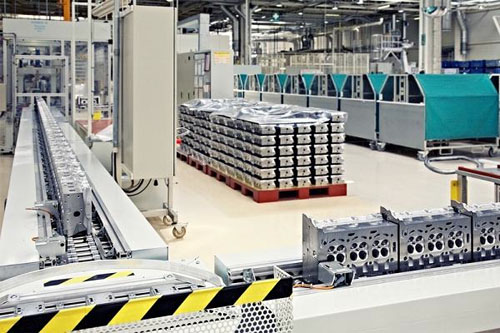Manufacturing facilities around the globe are always seeking out ways to further improve processes and improve their overall operation. As processes on the floor are tweaked or altered with automated equipment or employee process changes, over time there will be potential profitability increases as well as cost reductions. While this all sounds rather simple, it is a bit more complex than what meets the eye. As manufacturing operations are attempting to do this, they are left questioning where to even begin? As this question comes up time and time again, manufacturing facilities are coming up with the same solutions – lean.

Lean manufacturing is a commonly utilized concept amongst facilities that seek to take their operation to the next level. Lean manufacturing involves processes such as identification of waste, analyzing the impact of that waste, and then ultimately taking a look at any potential solutions on how the facility can improve and ultimately eliminate that waste.
As lean tools are being implemented and utilized in more facilities daily, it is also important to keep up with changes within lean and any new concepts associated with the methodology. Lean manufacturing, quick-response manufacturing, theory of constraints, and operational excellence all can have a substantial impact on your operation, which is why it is extremely important to understand these tools and how you can use them. As lean continues to be a groundbreaking methodology, what does the future for lean look like?
How Lean Continues to Enhance Processes in 2020
Within lean, there are a few aspects in which the methodology continues to change the game. Some of these aspects include the following:
- Organizational Chart – One of the most common issues within a facility includes employees being unable to see the bigger picture. As each individual or employee works on their part, they are unable to see the whole picture. This isn’t out of malice or spite, but rather because it is looked at as the conventional functional hierarchy. Lean challenges this thinking and concept, considering that cross-functional teams can be much more beneficial to their operation. This allows for a bit of tweaking to the organizational chart and allowing departments to be able to work together on projects as opposed to separately. As these departments and processes are combined, there will be much more detailed preproduction planning, ultimately ensuring for smoother production. While there will be surprises that happen, the shop’s organizational structure still works toward smoothing out production, which is better to work toward as opposed to being against it.
- Order Processing – People and equipment are able to move mountains in order to deliver an order. While this is beneficial, there is something to keep in mind – the shop first has to receive that order first. A company is able to avoid potential production issues with the right preproduction process. This is where quick-response office cells with cross-trained teams of estimators, engineers, purchasers, production planners, and more can be beneficial through delivering jobs downstream. It may also be advantageous to take a look into the quoting process and how it may hinder order processing and winning over customers. Detailed quoting can take some time, which may be causing you to lose work through consumers looking elsewhere.
- Flow Predictability – Production and manufacturing can be chaotic. With quick changes in demand and any mishaps on the line – it can be quite a volatile environment. This is where attempting to predict flow and being able to visualize production can be advantageous. Once flow is obvious and visual, pull systems are able to be implemented and information is pulled from upstream. Flow predictability is one of the most substantial advantages when utilizing lean concepts and tools and attempting to integrate a pull system into your production facility.
A software that can aid with concepts pertaining to lean manufacturing includes PlanetTogether’s Advanced Planning and Scheduling (APS) Software. PlanetTogether’s Advanced Planning and Scheduling (APS) Software is a must for manufacturing facilities that are seeking to increase profitability and cut costs through operational enhancements. PlanetTogether’s software can easily manipulate production schedules and eliminate various forms of waste, ultimately ensuring that your production facility maintains a competitive edge.
Advanced Planning and Scheduling Software
Advanced Planning and Scheduling (APS) software has become a must for modern-day manufacturing operations due to customer demand for increased product mix and fast delivery combined with downward cost pressures. APS can be quickly integrated with a ERP/MRP software to fill gaps where these system lack planning and scheduling flexibility and accuracy. Advanced Planning and Scheduling (APS) helps planners save time while providing greater agility in updating ever-changing priorities, production schedules, and inventory plans.
- Create optimized schedules balancing production efficiency and delivery performance
- Maximize output on bottleneck resources to increase revenue
- Synchronize supply with demand to reduce inventories
- Provide company-wide visibility to capacity
- Enable scenario data-driven decision making
Implementation of Advanced Planning and Scheduling (APS) software will take your manufacturing operations to the next level of production efficiency, taking advantage of the operational data you already have in your ERP.
Related Capacity Planning Video
APS Resources
Topics: Lean Manufacturing




















LEAVE A COMMENT